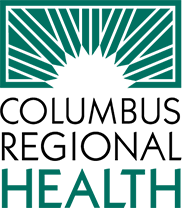Tips to Protect Yourself and Your Community from COVID-19
No matter who you are or where you live, one topic dominates all conversations: the coronavirus. In this ever-changing world filled with more questions than answers, here’s a list of tips to protect yourself and your community from COVID-19.
No one is immune
The coronavirus, also known as COVID-19, first appeared in late 2019 in Wuhan, China. Now, this respiratory illness has spread around the globe — reaching the U.S. and more than 100 other countries. Anyone can get sick regardless of their race or ethnicity.
It’s possible to have the coronavirus and not know it
Feeling like your typical, healthy self doesn’t necessarily mean you are virus-free. Some people who test positive for COVID-19 don’t have any symptoms at all. And even for those who do develop symptoms; it can take up to 14 days for the warning signs to appear.
Symptoms
Patients with COVID-19 report a variety of symptoms ranging from mild to severe. You should not go to work or send a child to school if they are exhibiting any of the following symptoms:
- Fever at 100.4 F or higher
- Cough
- Shortness of breath/difficulty breathing
- Fatigue
- Sore throat
- Chills
- Muscle or body aches
- Headache
- New loss of taste/smell
- Diarrhea
- Nausea or vomiting
- Nasal congestion/runny nose
You can help stop COVID-19 and protect yourself and your community
- Wash your hands frequently with soap and water; scrub for at least 20 seconds. You can use an alcohol-based hand sanitizer if hand-washing isn’t an option.
- Avoid touching your eyes, nose, and mouth with unwashed hands.
- Clean and disinfect surfaces that are touched often (doorknobs, light switches, remotes, etc.)
- Stay home when you are sick and keep away from people who are sick.
- If you must go out in public, wear a mask and maintain at least 6 feet of space between yourself and others.
- Avoid gathering with anyone besides the members in your current household.
Tips for children returning to school
- Regular hand washing is one of the best ways to remove germs, avoid getting sick, and prevent the spread of germs. For younger students, practice at home by counting to 20 (sing Happy Birthday or the ABC song twice) while scrubbing between fingers and the front and back of hands.
- Your child will need to wear a mask at school during times where social distancing is not possible. Provide your child with a clean mask and back-up mask each day and a clean, resealable bag for them to store the mask when they can’t wear it, such as at lunch.
- Label your child's mask clearly so it's not confused with another child's.
- Practice properly putting on and taking off cloth face masks with your child while avoiding touching the cloth portions.
- Remind your child that they should clean their hands before and after touching their mask.
- Instruct your child to never share or trade masks with others.
- Talk to your child about the importance of wearing a face mask and model wearing them as a family.
- Discuss with your child why some people may not be able to wear face masks for medical reasons.
- Check your child’s temperature every morning. If 100.4 degrees F or higher, or above the school district’s threshold, your child must stay home until fever free (without the use of medication).
- Whether attending school or learning at home, make sure your child is up to date with all recommended vaccines. All school-aged children should get a flu shot each season. Although the flu shot does not protect against COVID-19, it can reduce the risk of the flu and its complications.
By following these simple prevention steps, you can help keep yourself and your community safe. Learn more at crh.org/virus.
Sources: Indiana State Department of Health and the Centers for Disease Control

CRH News
-
Final Two CRH Practices Move to NexusPark
Apr 18, 2024, 12:36 PM by DeClue, A.CRH at NexusPark officially opened in late January, and more than 15 provider practices and services have relocated to the space in the first quarter of 2024.Full story -
Wound Center Receives National Awards
Apr 3, 2024, 15:21 PM by DeClue, A.The Wound Center achieved outstanding clinical outcomes for twelve consecutive months, including a patient satisfaction rate higher than 92 percentFull story -
CRH conducting independent public health survey
Mar 26, 2024, 12:41 PM by DeClue, A.Columbus Regional Health is conducting a Health Status Survey by telephone and online from March through May.Full story -
Columbus Regional Health offers new online health portal for expectant parents
Mar 25, 2024, 14:21 PM by DeClue, A.With CRH’s new My Pregnancy Journey, patients can use their computers or mobile devices to review digital prenatal education from a trusted source and track important decisions and tasks that need to happen at specific pregnancy milestones.Full story -
Additional Medical Practices Move to NexusPark
Mar 25, 2024, 11:24 AM by DeClue, A.More practices and services relocate to NexusPark facility.Full story -
Eclipse office hours for CRH-affiliated services
Mar 21, 2024, 14:01 PM by Laker, J.Office hours for CRH-affiliated practices and service lines for the April 8, 2024, Total Solar Eclipse.Full story

